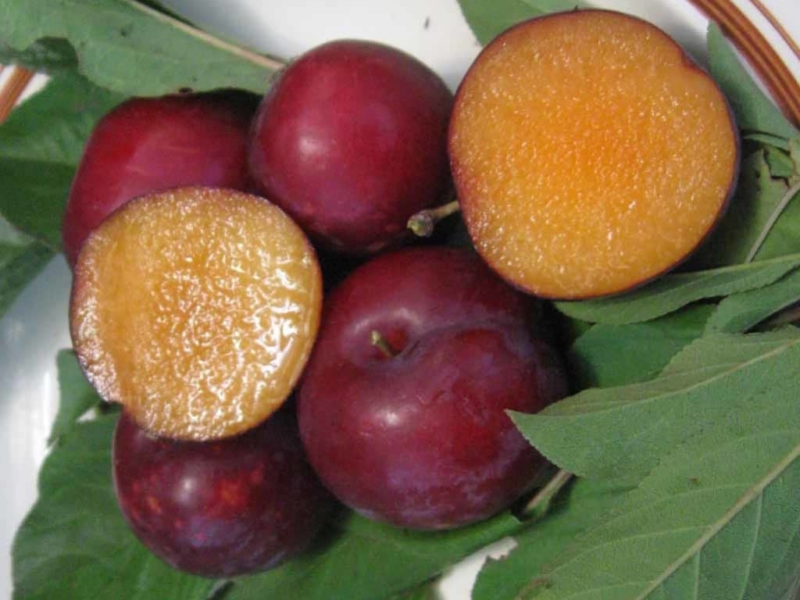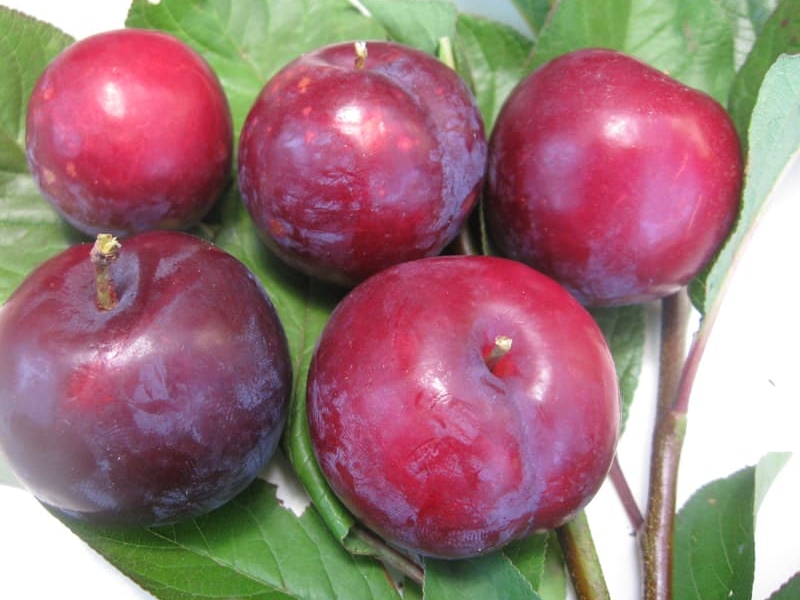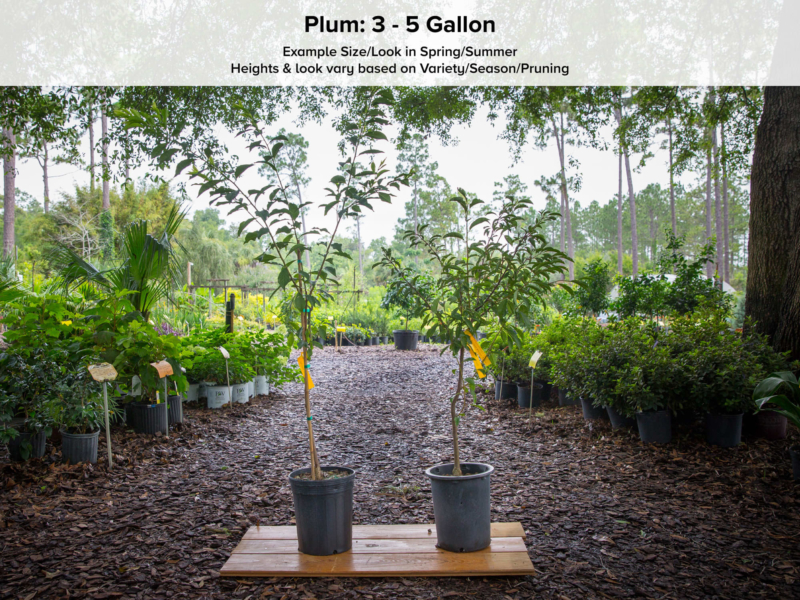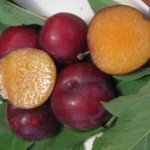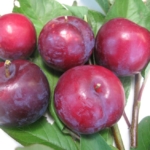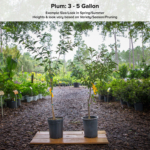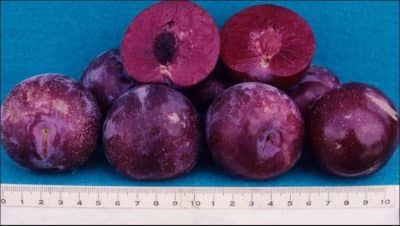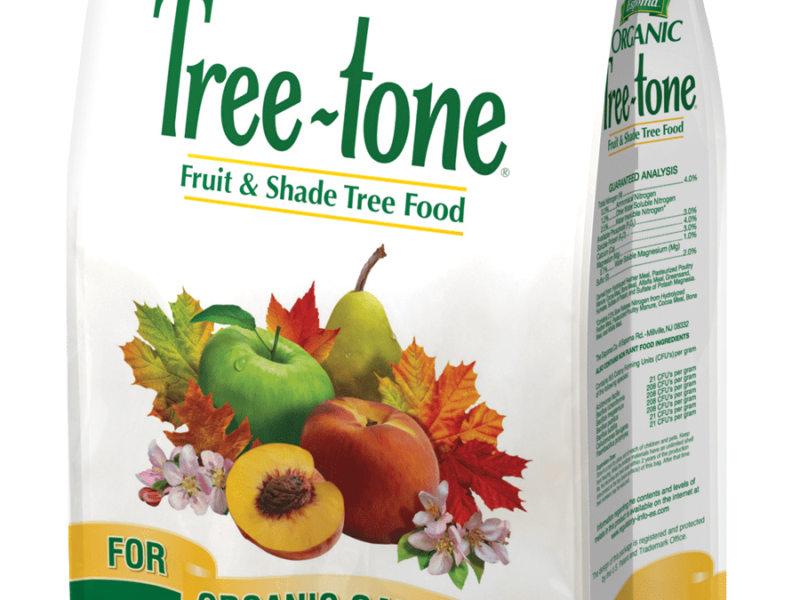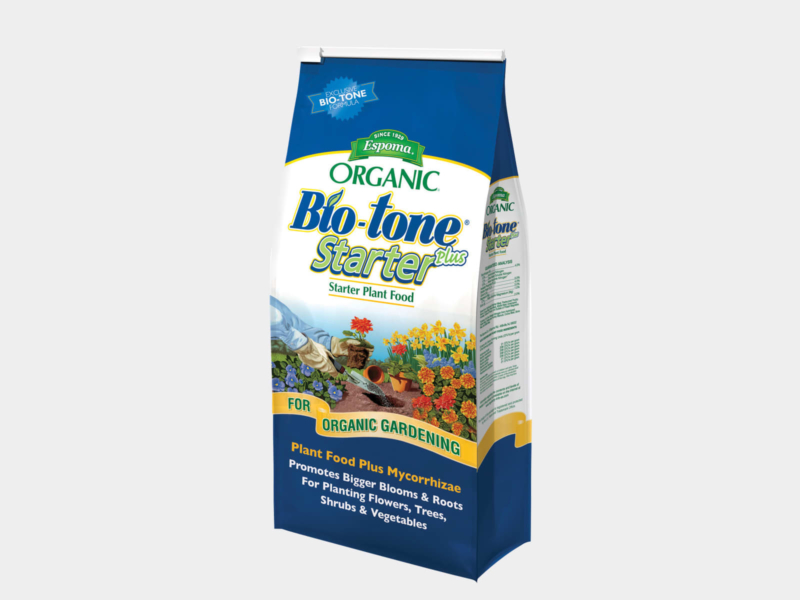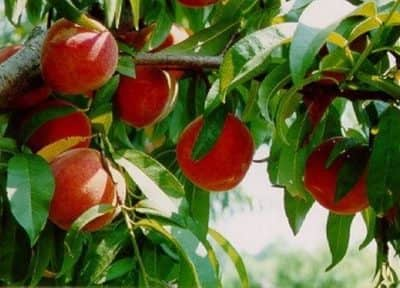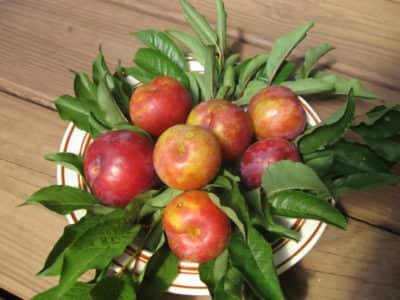Recommended with Gulf Blaze Plum Tree
- Product Description
- Planting & Care
- Shipping Info
Gulf Blaze Plum Tree: Flavorful Jewels of the South
About the Fruit
Plunge into the luscious world of Gulf Blaze Plums, where each bite is a symphony of sweet and tart flavors. These plump jewels, draped in their vibrant, deep-red skin, hide a succulent amber flesh that is irresistible to the palate. Perfect for snacking, baking delightful pies, or creating sumptuous preserves, the Gulf Blaze Plum offers a versatile culinary experience. They are not just a treat for the taste buds but also a healthful addition to your diet, rich in vitamins and antioxidants.
What to Know About the Tree
The Gulf Blaze Plum tree is a stunning addition to any landscape, with its bountiful presence that announces the arrival of spring with delicate white flowers. This deciduous tree paints a picturesque scene as it cycles through the seasons, providing a canopy of green foliage that transitions to fiery hues in the fall. Known for its vigor and adaptability, the Gulf Blaze Plum tree can reach a height of 15-20 feet, making it a magnificent centerpiece for your garden.
Harvest Season
Anticipation peaks in the heat of summer when the Gulf Blaze Plum reaches its optimal ripeness. The tree becomes adorned with ruby-like fruits, ready to be plucked and enjoyed. Harvest season for these plums is not just a time of abundance but also an opportunity to create memories with family and friends as you gather the sun-kissed bounty together.
Enhancing Your Fruitscape™
Imagine a fruitscape™ that offers more than mere aesthetics; a living, breathing orchard right in your backyard. The Gulf Blaze Plum tree is the perfect candidate for this transformation. As it thrives, it becomes a living sculpture, accentuating your outdoor space with beauty and purpose. It’s more than just a tree; it’s a statement of life and vitality, offering shade, blooms, and delectable fruits. Integrating this plum tree into your fruitscape™ will not only elevate the visual allure but also bring the luxury of homegrown, fresh plums to your table.
At Just Fruits and Exotics, you can trust our commitment to quality. We ensure each Gulf Blaze Plum tree is shipped in its pot, reflecting our dedication to replicating the in-person buying experience. Our superior packaging and easy shipping guarantee the safety of your plant from our nursery to your garden. As a nationally renowned, family-owned online nursery, we pride ourselves on blending trusted expertise with a local, friendly vibe. Let us help you enrich your garden and life with the Gulf Blaze Plum tree—an exceptional choice for both novice and seasoned gardeners alike.
| Chill Hours | 250 Chill Hours |
|---|---|
| Cold Hardy | 15-20° |
| Container Plant | No |
| Grafted | Yes, on Nemaguard or Flordaguard Rootstock |
| Growing Zone | 8B, 9A, 9B |
| Mature Height | 12-18 FT |
| Mature Width | 12-15 FT |
| Pollinator | Any Other Gulf Series Plum |
| Spacing | 12-15 FT |
| Sunlight | Full |
Recommended Fertilizers
Starter Fertilizer: Kickstart with Espoma Organic Bio-tone® Starter Plus. This potent blend boosts root mass and aids in mitigating transplant shock, ensuring your plants thrive in their new home.
Maintenance Fertilizer: For continued growth and fruit production, we recommend Espoma Organic Tree-tone Fertilizer. Designed specifically for fruit trees, this balanced formula nourishes your plants, promoting vibrant growth and bountiful harvests.
Fruitscaping™ with Plum Trees
Immerse yourself in the vibrant world of Fruitscaping™ with our beautiful and bountiful Plum Trees. Famed for their attractive blossoms and delicious fruits, these trees will become a standout feature of your home orchard or edible landscape.
Plum trees are low maintenance and highly resistant to pests and diseases, making them a fantastic choice for organic gardens. They flourish in well-drained, fertile soil and appreciate full sun exposure for the healthiest growth and the highest fruit yield.
We offer a diverse selection of Plum tree varieties, such as Santa Rosa, AU Rubrum, AU Rosa, Segunda, and Gulf varieties like Gulf Blaze and Gulf Beauty. Each variety delivers unique flavors and colors – from the succulent, crimson-hued fruits of the Santa Rosa, to the sweet, golden delight of Gulf Beauty. Whether you plan to make jams, pies, or enjoy them fresh from the tree, our Plum Trees cater to every preference.
In your Fruitscaping™ design, Plum trees offer much more than just tasty fruit. Their early spring blossoms provide a breathtaking display of white or pink, announcing the arrival of the warmer seasons. Come fall, their leaves turn vibrant shades of red and yellow, injecting a splash of color into your landscape.
Plum trees can be trained into beautiful espaliers against a wall or fence, or grown as free-standing trees in your yard. If you’re working with limited space or wish to decorate your patio or deck, they’re also excellent for container gardening.
Embark on your Fruitscaping™ adventure with our Plum Trees today. From planting and caring, to harvesting and savoring your very own homegrown plums, you’re in for a truly gratifying gardening journey. Enjoy the process and the fruit of your labor with our Plum Trees.
Growing Guides
You can find many planting & care guides on our growing guides page.
Shipping Restrictions
Unfortunately, We Cannot Process Orders to California, Hawaii, Alaska, or Internationally: Please note that due to specific agricultural regulations, we’re unable to ship any plants to the states of California, Hawaii, and Alaska, or outside the United States. Additionally, citrus trees can only be shipped within the state of Florida.
Shipping Information
Before Your Plants Arrive: You can find many guides on unpacking, planting, & care, on our growing guides page.
The Journey From Our Nursery to Your Door: We NEVER ship our plants bare root. Your plant will travel in the very container in which it was nurtured. We thoroughly prune and water them before packing, and make sure they’re well wrapped to retain moisture during transit. It’s as though you’ve personally collected them from our nursery!
Choose Your Ship Date: We understand you’ll want to be available when your plant arrives. Our checkout process features a handy calendar that allows you to choose the Monday on which you want your plant to ship. Depending on your location, you’ll likely receive your plant by Wednesday, Thursday, or Friday of that week. Once shipped, UPS will generate a tracking number and send it to the email you provided. You can then follow your plant’s journey and ensure someone is available to unpack it on arrival day.
Click Here To View Our Shipping Page For More Information & Packing/Unpacking Plants Videos
Growing Calendar
- Planting
- Pruning
- Harvest

